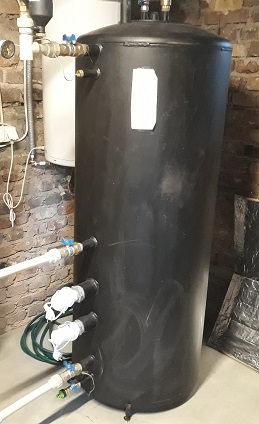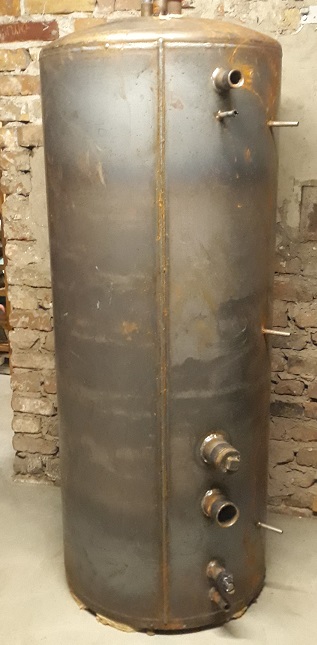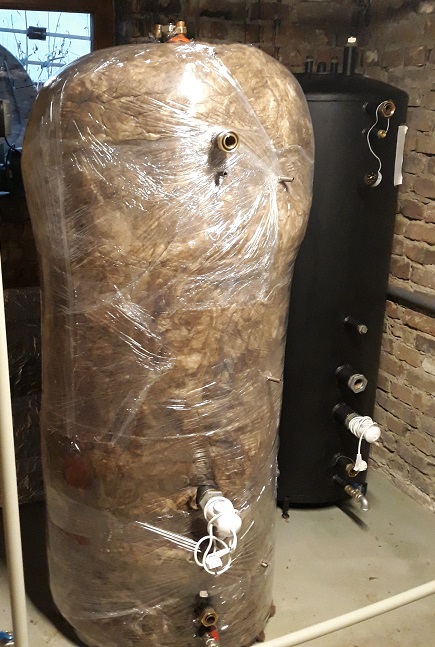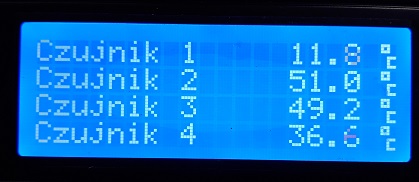So, I bought a used heat buffer.
It is 160cm tall and 60cm diameter, giving roughly 500 liters, of which 120 liters is an internal metal tank for domestic hot water. I searched for a plumber who would redo my old heating system to install the tank, and only the seventh(!) one was brave enough to take the job.

He hooked it up, we filled it with rainwater, and... it turned out to have a leak in the internal DHW tank. NO!!!!
So I called the guy I purchased it from, he was terribly sorry, he was sure that his workers had pressure-tested it before he sold it. He promised to deliver an almost identical model, but with copper internal tank, which does not have the corrosion/leakage problems. It took many months before he found one, but finally it arrived in February


Not waiting for the plumber, I tried my luck with the connections and all seem to be good.

I put a 10cm layer of mineral wool and plastic wrap as insulation.

I filled it with rainwater and no leaks!

This week I have been slowly heating it to higher temperatures (I am approaching 60°C) and checking for issues with leaks, pressure, temperature differences between top, middle and bottom, circulation pump settings, etc.

I have not yet connected the DHW (still testing solely for household heating), but one problem that I have already identified is that I am losing heat to convection. I have a one-way valve before the boiler, so that loop is OK, but the pipe leaving the tank to the house's radiators is quite warm, and the radiators never completely cool down, even when the circulation pump has been off for hours. I was not expecting this, a plumber once told me that a stopped pump will block convection. Apparently not.
So, what to do with the convection?
- Add some electromechanism to automatically open the hot valve when the thermostat turns the pump on, and close it otherwise,
- Redo the plumbing to add a heat trap between the buffer and the radiators
- Someone proposed adding a one-way valve with a spring after the pump.
I am not sure whether the spring in the one-way valve is strong enough to stop the flow, but maybe I could try both options 2)and 3)? They are more passive than option 1) so less to fail.
Any suggestions?